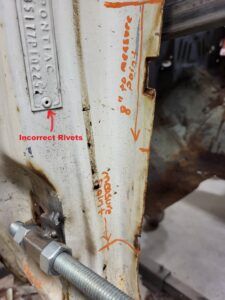Mid West Classics & Customs Offers Insight into the Buying Process
If you’re looking into buying a classic vehicle, you may have questions about what to watch out for. Mid West Classics & Customs reviews some things you can expect.
You’ll always want to try and keep your emotions at bay. What can happen when a buyer is looking at a potential purchase of a classic, muscle car, or hot rod, they let their feelings of excitement cloud their vision on what they’re looking at. When this happens, it is possible to overlook obvious issues with the quality of the car and potential future problems. Remember to keep calm, even if it’s the car you’ve been looking to purchase for many years.
Physical Clues to Look for When Buying a Classic Vehicle
There are several physical clues to check when considering your purchase. What you want to look for is as follows:
Look for any visible bubbles in the bodywork which is a sure sign of rust hiding underneath. If there is visible rust, look at how extensive it is. Rust is the #1 killer of your restoration budget.
Look for any panel misalignment such as doors sagging and/or not operating properly as well as the fitment of the hood and trunk lid. It may only be a minor issue of worn out hinge bushings, or it may be a sign of some serious structural damage.
Look for Signs of Mold, Mildew, and More
When you sit in the car, check for visible mold, the smell of mildew, or the smell of rodent infestation. Visible mold and/or a smell of mildew are sure signs that moisture is getting in on a regular basis. Smelling rodent urine sometimes is just a minor issue, but it can become a major issue if the infestation was left alone for a long period of time. Rodent urine is extremely corrosive and can cause significant damage to the metal inner structure of the car over time. Rodents like to find small tight spaces to nest which can be very difficult to remediate and treat due to the lack of accessibility.
Focus on Possible Signs of Component or Part Contamination
Visually check the fluid levels of the engine, transmission, and radiator and look for any signs of contamination like metal in the oil or transmission fluid or oil and rust in the radiator. Also look for any major fluid leaks from the engine, transmission, rear axle, and cooling system. Minor dripping and seepage are normal, but if the underside is coated with fluids or there are large puddles where the car has been parked, it can be a sign of a larger problem. Also, be sure to start the engine cold and listen for any signs of knocking, tapping, or anything that sounds out of place. Cold engines will make some noise at start-up, but if the noise continues after the engine has been running for a few minutes, it may be a sign of worn out internal components, or low oil pressure.
Check Available Identification and Paperwork
Check that the paperwork for the car matches the vehicle identification number (VIN) and that the VIN is correct for the model car you are looking at. Some older cars such as those from the 20’s thru the 50’s may be missing their VIN tag and only have the numbers stamped on the frame, while some cars have had their VIN plates swapped from a damaged or wrecked car. If you’re looking at a more desirable and high dollar collector car, you’ll need to check to see if the VIN plate and numbers have been swapped onto a lower end model car. This happens more often than most buyers are aware because a more desirable car can fetch a higher price. An example would be swapping the tags and numbers from a totaled original car like a GTO onto a lesser model such as a Tempest or Lemans. Since a GTO will fetch a higher price, an unsuspecting buyer might end up overpaying for a car that isn’t legitimate.
Do your homework before and learn everything you can about the car you’re interested in before you decide to purchase.
For more information, Mid West Classics & Customs at (419) 523-6900. Follow us on Facebook for the latest news and information in and around Ottawa, OH. We are happy to discuss more about buying a classic car and what to look for.






